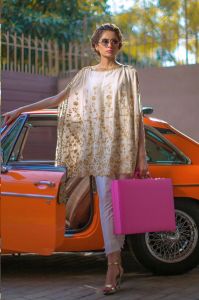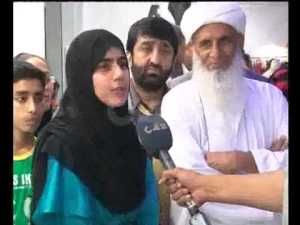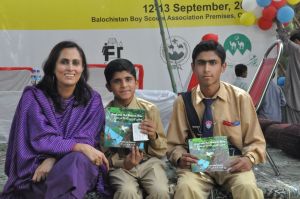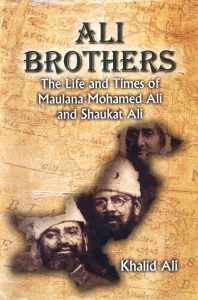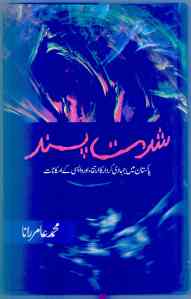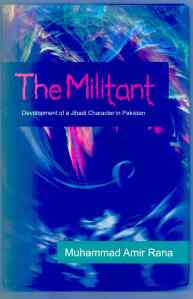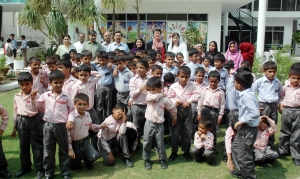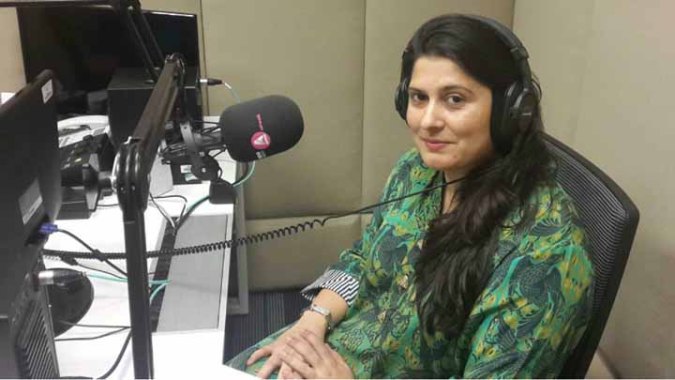 Sharmeen Obaid-Chinoy is an Academy Award and an Emmy Award winning documentary filmmaker. She has made various multi award winning films in over 10 countries around the world. Her films include Saving Face, Transgenders: Pakistan’s Open Secret and Pakistan’s Taliban Generation. In 2012, Time Magazine included Sharmeen in their annual list of the 100 most influential people in the world. In 2013, the Canadian government awarded Sharmeen a Queen Elizabeth II Diamond Jubilee Medal for her work in the field of documentary films and the World Economic Forum honoured her with a Crystal Award at their annual summit in Davos. This year Sharmeen’s another documentary, A Girl in the River: The Price of Forgiveness is nominated as one of only 5 documentaries from across the globe, in the Best Documentary – Short subject category for the 88thAcademy Awards. In an exclusive interview Sharmeen shares about this documentary and hurdles she faced during her career as documentary filmmaker.
Sharmeen Obaid-Chinoy is an Academy Award and an Emmy Award winning documentary filmmaker. She has made various multi award winning films in over 10 countries around the world. Her films include Saving Face, Transgenders: Pakistan’s Open Secret and Pakistan’s Taliban Generation. In 2012, Time Magazine included Sharmeen in their annual list of the 100 most influential people in the world. In 2013, the Canadian government awarded Sharmeen a Queen Elizabeth II Diamond Jubilee Medal for her work in the field of documentary films and the World Economic Forum honoured her with a Crystal Award at their annual summit in Davos. This year Sharmeen’s another documentary, A Girl in the River: The Price of Forgiveness is nominated as one of only 5 documentaries from across the globe, in the Best Documentary – Short subject category for the 88thAcademy Awards. In an exclusive interview Sharmeen shares about this documentary and hurdles she faced during her career as documentary filmmaker.
What was the first thought that came to your mind when you came to know that your documentary has once again been nominated for an Oscar?
The first thing that came to my mind was that we could push the Anti-Honor Crime bill through.
You won an Oscar in 2012 and now your documentary is again nominated for the 88th Academy Awards. How excited are you about this nomination?
I am proud to be representing Pakistan on such a prestigious platform- that too for the second time. I am grateful that the SOC Films production was able to share the untold story of A Girl in the River: The Price of Forgiveness with a global audience. Since the start of my career I have always endeavoured to share the stories of those who cannot do so themselves. To be acknowledged for this work is always very humbling and on such a giant platform like the Oscars – makes it surreal.
What does a second Oscar nomination mean for you personally?
For me personally, it will be an even bigger win if we, as a nation, take this opportunity to acknowledge that we have a problem and pass the Anti-Honour Killings Laws (Criminal Laws Amendment) Bill 2014. It is time we change the law and stand up for the victims of this heinous crime.
Honour killings affect hundreds of women in Pakistan every year. How do you think the documentary will help the case for this tragic abuse of human rights?
I believe that film can be a powerful tool to convey complex and difficult problems in a way that prompts dialogue and empathy. My aim is to produce content that pushes people to look at the world more critically, thereby creating an environment for social change and development. I hope this film will spur more support for the victims of honour killings and send out a strong message that this heinous crime is not a part of our culture or religion. Inspired by Saba’s story, we have launched a campaign, which hopes to mobilize all stakeholders including politicians, members of civil society & the government to help push the Parliament to pass the Anti-Honour Killings Laws (Criminal Laws Amendment) Bill 2014.
The law, as it stands, considers honour killing an offence against the individual and hence the victim can choose to ‘forgive’ the perpetrator. If the victim is killed, which is often what happens in such cases, the family of the victim has the right to forgive the perpetrator. Last year, Senator Sughra Imam introduced the Anti-Honour Killings Laws (Criminal Laws Amendment) Bill 2014, which aims to make the crime non-compoundable so that a convicted person cannot escape culpability by being ‘forgiven’ by the victim. The bill passed through Senate in March 2015 but lapsed in Parliament later that year. We are determined to push all stakeholders to pass the Anti-Honour Killings Laws in the Parliament. This would right a long-standing wrong in the Pakistani society and ensure that perpetrators are punished and victims are protected.
How do you research your documentaries and how long does it normally take?
I am always looking to bring the stories of marginalized communities to the forefront. Sometimes I am inspired by something as simple as reading a news article or having a short conversation with someone I don’t know. With A Girl in the River: The Price of Forgiveness, I read about Saba’s story in the newspapers shortly after the incident took place and I knew I had to share her story with the world – her only ‘fault’ was falling in love.
Honour Killings are considered a taboo subject by many in Pakistan. There is a perception that somehow these murders fall under the prevue of the family and that they shouldn’t be questioned or challenged. To me they have always been pre meditated cold-blooded murders justified under the guise of culture or religion. So even while some newspapers would report honour killings embedded within the article would be some sort of justification “the girl was killed because she ran away from home” or because “she fell in love” or because “she wanted a divorce”.
I wanted to tell the story of a victim of honour killing because I wanted to start a national discourse about this issue and build momentum to garner support for key legislation. As far as time is concerned, in documentaries, you have to spend a considerable amount of time on the ground and establish relationships with your subjects. You have to let their story unfold naturally – therefore, each documentary, depending on the subject and their journey, takes different amounts of time. We started working on this film in early 2014 and we followed Saba for over a period of one year.
What kind of obstacles did you come across while filming A Girl in the River: The Price of Forgiveness?
The biggest challenge we faced was overcoming the mindset in the local community. Many people believe that there is nothing wrong with killing your wife, daughter or mother if they have brought ‘shame’ to the family. I went to speak to Saba’s father after he has been arrested and he had so much hatred in him. He was still adamant that Saba was in the wrong and he felt justified trying to kill his own daughter. He felt it was his duty as a father and husband to protect his family from the ‘dishonour’ that Saba brought upon them by falling in love and getting married. The interaction that I had with him spoke volumes about the kinds of choices we women have in the world and how our lives are impacted by the decisions taken by others.
Your filmmaking is incredibly gutsy and personal. Did you ever face any physical danger while working on such projects?
I haven’t faced any physical danger as such but as a documentary filmmaker, you are trained to deal with life threatening situations. That said, I would be lying if I said that I have never felt fear, or worried about putting my subject and myself in danger. The first time I felt that being a woman served as a hurdle in getting access or being able to move freely as a journalist was when I was filming ‘Women of the Holy Kingdom’ in Saudi Arabia. My all-female crew was stopped many times and our tapes were confiscated. We required a male escort for the simplest of tasks such as checking into our hotel. A film that was supposed to be about the women’s movement in Saudi Arabia became as much about our experience as female filmmakers in the country.
You unveil the injustices and dark side of humanity in your work, often delving deep into the stories to uncover the truth. Do you fall asleep easily at night after witnessing so many tragic incidents?
There have been many times during the course of shooting when I have felt emotionally overwhelmed, but then I think about some of the subjects that I have followed. Their ability to pursue life-altering decisions under the toughest of circumstances gives me hope and inspiration, and I feel more motivated than ever to share their stories with the rest of the world.
What are some of the challenges of being a documentary filmmaker in Pakistan, especially as a woman?
Pakistan is now officially one of the most dangerous countries in the world for journalists to work in. Colleagues are routinely picked up by authorities, beaten and simply killed off. But being a woman is overwhelmingly an asset in my field more than it is a hindrance. I am alive today because I am a woman. I think women have a special way of navigating through Pakistan and people here have a great deal of respect for female journalists. I also am able to work in communities that observe strict division based on gender, as I am able to speak with and film women.
Who has had the biggest influence on your life?
My father is my biggest inspiration. He was a self-made man in textiles – a very hardworking man, and father of six children, five girls and one son. He dropped out of college and started his own business, which did extremely well. He taught me that I can do anything I put my mind to!
And finally, do give us a sneak peek about your preparations for this grand award ceremony! What/ who are you wearing, and who are you taking with you to the show?
I am still deciding!
![Abbas Hasan [13]](https://faizanhussain.files.wordpress.com/2016/01/abbas-hasan-13.jpg?w=676) Music stars belonging to South Asian region are gaining immense popularity all around the world. Abbas Hasan, an award winning French singer of Pakistani origin, is one such artist who is constantly making headlines. Besides all the nominations and awards which he had won, Abbas recently signed a major deal with the Pan-Asian Film and Music Awards academy (PAIFMA). The academy has recognized Abbas Hasan as one of the top Asian artists in the UK and is featuring him as one of the leading young artists to watch. He is now an official brand ambassador for the PAIFMA. After this deal he also released his immensely anticipated music video Sweet Girl, which is in Urdu-English and starts out with some vocals in French. In an exclusive interview with the Weekend he talks about this deal and his music career.
Music stars belonging to South Asian region are gaining immense popularity all around the world. Abbas Hasan, an award winning French singer of Pakistani origin, is one such artist who is constantly making headlines. Besides all the nominations and awards which he had won, Abbas recently signed a major deal with the Pan-Asian Film and Music Awards academy (PAIFMA). The academy has recognized Abbas Hasan as one of the top Asian artists in the UK and is featuring him as one of the leading young artists to watch. He is now an official brand ambassador for the PAIFMA. After this deal he also released his immensely anticipated music video Sweet Girl, which is in Urdu-English and starts out with some vocals in French. In an exclusive interview with the Weekend he talks about this deal and his music career.